“In a 1937 broadcast entitled,” Craftsmanship,” Virginia Woolf seems to predict the ways that contemporary political movements and subsequent social changes have impacted on readers’ ability to discern meanings in her fiction inaccessible to previous generations. She writes that “words that are unintelligible to one generation [may become] plain as a pikestaff to the next” (Moth 206). In our own time, lesbian and feminist movements have inaugurated transformations in consciousness and reading
abilities that have begun to reveal to readers how much Woolf’s lesbianism and her responses to childhood sexual abuse shape her point of view and her work…” ( Patricia Kramer )
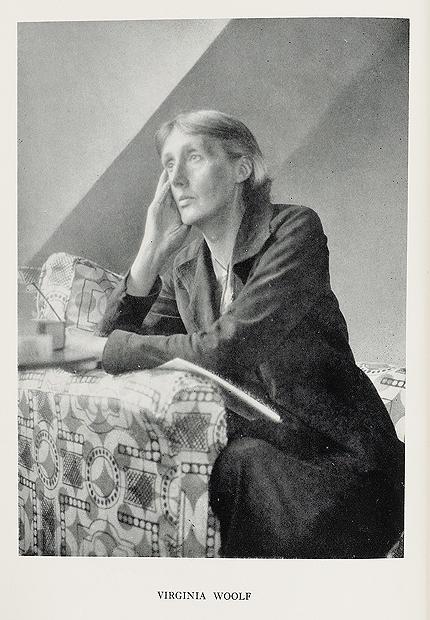
"While I am troubled by some of Virginia Woolf’s philosophies, I admire both her independent and artistic spirits. Her feminist and self-supportive ideas about an artist being enabled by having a room of one’s own, a place to create, a shelter, with the necessary financial and social support to do so – is worth consideration. And to her credit, her famous title of “A Room of One’s Own” is gender neutral – expressing the importance of a peaceful and supportive place to create, important for all artists, male or female."
In the early years of the twentieth century, Bloomsbury was bright promise, gaiety and wit. But all the while, its most celebrated novelist was battling private demons that would one day overwhelm her.
The Bloomsbury group was a collection of writers, artists and intellectuals who gathered in a part of London around the British Museum in the early 1900’s. Probably the most famous today are John Maynard Keynes , upon whose theories our modern economy is based; Virginia Woolf, the novelist, and her husband Leonard Woolf, an active radical best remembered for his five volume autobiography; Lytton Strachey, who revolutionized the art of biography; E.M. Forster, the doyen of tentieth century British novelists; Roger Fry the art critic; his ebullient lieutenant Clive bell, who married Virginia Woolf’s sister, the painter Vanessa Bell; and, on the periphery, various poets and philosophers from Rupert Brooke to Bertrand Russell.
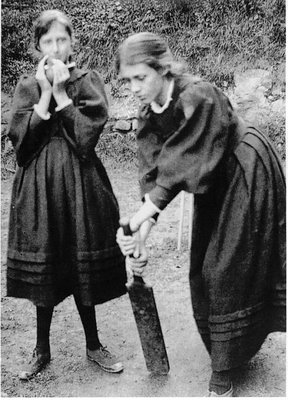
A light moment in a predominantly gloomy childhood. Virginia L age twelve, plays cricket with her sister in 1894.
The role of the Bllomsbury group in British cultural life has not been easy to define. They are part and are not part of the contemporary world. Their was a transition period that began in Queen Victoria’s reign and resulted in a revolt against those standards; they are an authentic bridge back to the cultural traditions of the nineteenth century.
To understand the core of Bloomsbury, one must begin with Cambridge where many of its members were educated, and with the philosophy of G.E. Moore: personal friendship + aesthetic appreciation= the good life. This, if anything, was the Bloombury creed; to develop one,s own feelings and talents first, and to influence society and the world only indirectly, by example, not precept. The Bloomburies lived with one another, decorated one another’s houses, cultivated their own gardens. Theirs was an anti-establishment movement, but not a political movement. Above all, they insisted on their identity as individuals.
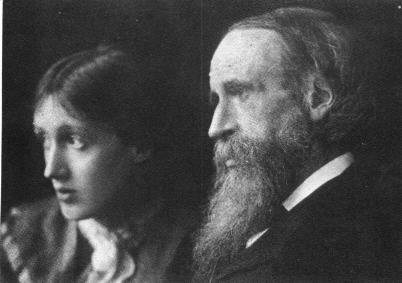
"While the narrative style of The Waves prohibits hearing a mother's point of view, there is a pre-Oedipal wholeness in the six-sided flower of the characters' lives. The image of the waves as a sea-goddess birthing the children is also important: it is the only voice of a mother that we hear speak for itself. There is little separation between the characters, though they fill almost stereotypical roles: Susan the earth mother, Bernard the businessman. The Waves is concerned with connections, and the characters are connected in some ways with the wave-goddess mother."
They were reformers of arts and letters, but they were not extremists, and certainly not revolutionaries. In painting, Roger Fry was opposed by the avant-garde Wyndham Lewis as well as by the academic Henry Tonks. In literature, Viginia Woolf turned up her nose not only at James Joyce’s “Ulysses” but also at the solid traditional novels of Arnold Bennett. They all supported D.H. lawrence, but tepidly. Though they might intellectually approve of what he did, they were socially and temperamentally averse to him. They kept their distance, as if he smelt a little.
To their enemies, the Bloomsburies were an elistist closed circle, pacifist in wartime, attacking their rivals between the wars, and, it seemed, a powerful influence upon the literary journals of the period. They were seen as a precious cul-de-sac of a movement, tidily kept but leading nowhere. In their own eyes, however, they
od for tolerance and intelligence, and philistinism was their enemy, in art and in life.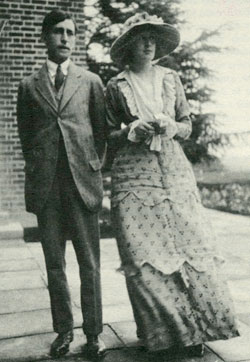
"It is a truth widely acknowledged that Camilla Lawrence in The Wise Virgins is a portrait of the author's wife, Virginia Woolf. Leonard Woolf began this novel while the couple was on honeymoon in Spain, a month after their marriage on 10 August 1912. The novel looks back to the period of their courtship after Leonard's return to London in June 1911 following a successful stint as a colonial administrator in Ceylon, the setting for his justly admired first novel, The Village in the Jungle ."
No one, perhaps, better exemplifies Bloomsbury than Virginia Woolf. She was born in London on January 25, 1882, one of the younger children of Sir leslie Stephen, a distinguished man of letters and most eminent Victorian. His influence on her was considerable. In many respects his career was an epitome of Victorian intellectualism. Brought up in the faith of the established church, he had gone to Cambridge, won a fellowship, and entered holy orders. But after eight years as a don he had been converted to agnosticism, leaving Cambridge for London and a career in literature. Stephen was celebrated as a skilled expositor of the agnosticism that permeated Victorian thought after Darwin’s “Origin of the Species”. Less tough than Thomas Huxley, less bleak than Herbert Spencer, he shared with many of the brilliant scholars who were his friends a core of poetry encased in a hard shell of pedantry.
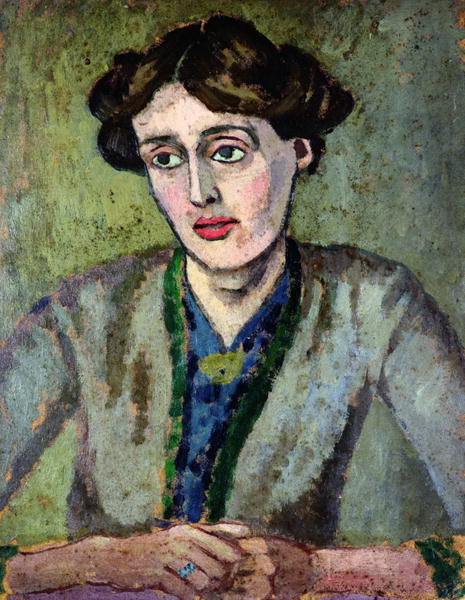
Virginia Woolf. Roger Fry. "When, towards the end of her life, VIRGINIA WOOLF (1882-1941), pioneer of literary modernism, met Sigmund Freud, pioneer of psychic spelunking, the latter presented her with a narcissus. It is not clear what Freud meant this gift to signify, but charitably it was a tribute to Woolf’s powers of penetrating the illusions of self. Her innovative and supple prose fiction elevates mundane events and concerns — planning a party (Mrs. Dalloway) or thinking about a family visit (To The Lighthouse) — to heights of lyric self-consciousness that define the age. Woolf’s recurring depression, rooted in childhood sexual abuse by a half-brother, is subtly folded into her art, giving the novels a melancholy beauty also to be found in the person of their author."
Stephen’s first wife had been a daughter of Thackeray. By his second wife, Julia Jackson, widow of Herbert Duckworth and mother of three, he had four children: Vanessa, Thoby, Virginia and Adrian. When Virginia was born, her father was almost fifty years old and the days of his athletic feats were over. Relics of these exploits; the dusty trophy on the study mantelpiece, the rusted alpenstocks that leaned against the bookcase, encumbered their house at Hyde Park Gate and contributed to its prevailing gloom. For despite its air of comfort, this was not a happy home.
To Virginia, the atmosphere seemed permanently overcast,threatening a storm, and she looked forward to the sunlit holidays by the sea. In summer the family often went to Talland House, at Saint Ives on the coast of Cornwall, where her father, pottering about the Cornish moors, seemed happier than in London and spread his happiness to the others. These summers of her chidhood left sea memories that haunt her novels; especially “The Waves” and “To the Lighthouse”; with images, rhythms, and colors, the blues and greens that shine through her work and give it a translucent glow.
If the sea symbolized the freedom and creativity of life, Hyde Park gate came to represent the threat of death. Her existence there, though outwardly secure, was interspersed by a series of traumatic shocks. “I still shiver with shame ,” she wrote many years afterward, ” at the memory of my half-brother, George Duckworth, standing me on a ledge, aged about six or so, exploring my private parts. ” Then, before she was ten years old, her first cousin, the handsome and talented J.K. Stephen , began to show alarming symptoms g vilentof mental instability. His eccentricities were so extreme that he was expelled from his club, and later, after making violent advances to Virginia’s half sister, Stella Duckworth, he was committed to an asylum where in 1892, he died. His father, Virginia’s uncle, was inconsolable. He retired; his health deteriorated rapidly; and in 1894 he died.

“That one would find any woman in that state of mind in the sixteenth century was obviously impossible. One has only to think of the Elizabethan tombstones with all those children kneeling with clasped hands; and their early deaths; and to see their houses with their dark, cramped rooms, to realize that no woman could have written poetry then.”
The following year brought the greatest disaster of all- the death of Virginia’s mother. The shock led to a breakdown, and according to some accounts Virginia tried to commit suicide by throwing herself out a window. It was from this time too, that her father’s health began to worsen, and after 1897, when Stella Duckworth died, he came to rely entirely on his tow daughters, Vanessa and Virginia.
She drew from the lives of author Virginia Woolf and painter Pablo Picasso to explain how great art, too, is a result not of creative brilliance but of attempts to deal with childhood pain.Using numerous case histories gleaned from her practice, as well as examining the biographical stories of celebrated writers such as Marcel Proust, Virginia Woolf, Friedrich Nietzsche, and others, Miller shows how a child’s emotional traumas, repressed humiliation, and bottled rage can manifest themselves as serious adult health problems. In discussing the lives of these literary giants, Miller explores the known or, in some cases, unknown traumas that haunted each author’s childhood. More important, Miller connects the writers’ painful childhoods with their later afflictions, which included depression, anorexia, cancer, and even insanity.
“But enlightened individuals are still rare, even among the experts. Anyone seeking information about Virginia Woolf on the internet will be told by renowned psychiatrists that she was “mentally ill” and that this had nothing to do with the sexual violence inflicted on her for years by her half-brothers when she was young. Although Virginia Woolf’s autobiographical writings give a harrowing account of the horrors of her childhood, the connections between these severe traumas and her later depression are still roundly denied in the year 2004.” ( Alice Miller )
“To illustrate her ideas, Miller provides brief portrayals of Fyodor Dostoevsky, Anton Chekhov, Franz Kafka, Friedrich Nietzche, Friedrich von Schiller, Virginia Woolf, Arthur Rimbaud, Yukio Mishima, Marcel Proust, James Joyce, Saddam Hussein, and Adolf Hitler. What do these writers, dictators, serial killers and others have in common? They all followed the Fourth Commandment. They honored their parents, even though and even while their parents did them harm. Each individual sacrificed their truth in the unanswered hope that they would be loved, and almost all died in denial and isolation, tragically unable to admit to their own personal truths. These lives and these stories lend credence to Miller’s argument that moral laws lead to repression and to emotional detachment.” ( Stephen Khamsi )


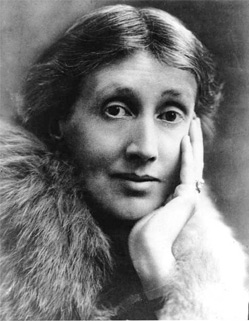
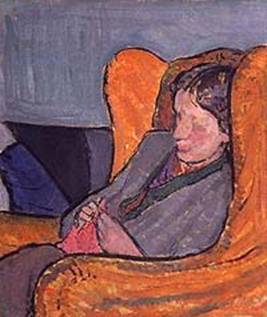



 COMMENTS
COMMENTS